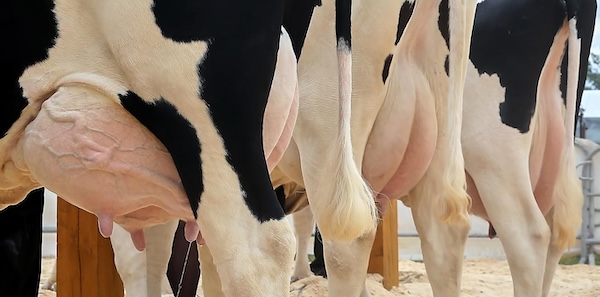A lot of questions, as well as alarms, are being raised as the ag world digests news that highly pathogenic avian influenza (HPAI), aka “bird flu,” is responsible for a mysterious illness afflicting dairy cows. According to the USDA, officials suspect the illness among primarily older dairy cows in Texas, Kansas, and New Mexico.
Officials confirmed the presence of HPAI clinical samples of milk from sick cattle collected from two dairy farms in Kansas and one in Texas, as well as an oropharyngeal swab from another dairy in Texas. According to the USDA, findings from Texas indicate the infections have been introduced by wild birds. Importantly, further testing has not found any changes to the virus that might make it more transmissible to humans, meaning the risk to the public remains low.
The milk samples tested were from unpasteurized supplies collected specifically from sick cows. As pasteurization is very effective at killing viruses, including influenza strains, officials are emphasizing that there is little risk to the US milk supply. Unfortunately, I’ve seen several headlines reporting that bird flu was found in the US milk supply, so don’t be surprised if some unfounded consumer panic develops.
If anything, the main risk right now may be the quantity of US milk supplies rather than the quality. According to Texas officials, herds may lose up to 40% of their milk production for a week to 10 days until symptoms subside.
Thankfully, USDA said there was “little to no associated mortality reported among the animals” that have been infected. Officials also say that depopulating affected dairy herds will not be necessary as cattle are expected to fully recover. Additionally, the virus is so far not infecting entire herds. Dr. Mike Brouk, Kansas State University Extension Dairy Specialist, said the highest percentage affected has been around 20% while the lowest is 5%.
Still, it is not clear whether the virus is being transmitted solely by wild birds or spreading from cow to cow. “That’s a question that’s going to have to get resolved quickly,” said Andrew Bowman, a molecular epidemiologist and influenza expert at Ohio State University. “If we have transmission cattle to cattle, that’s a different story. That certainly makes me a little more nervous.”
USDA says that federal and state agencies are moving quickly to conduct additional testing for HPAI, as well as viral genome sequencing, so that they can better understand the situation, including characterization of the HPAI strain or strains associated with these detections.
Officials say the outbreaks are caused by the same H5N1 strain that emerged in Europe in 2020 and has since spread to wild birds to a point that most scientists think the disease is now endemic. The strain is also the same one that has repeatedly spread to other mammals, including seals, bears, foxes, skunks, farmed mink, tigers, leopards, and even cats and dogs. Just this week, several baby goats in Minnesota were confirmed to be infected with the virus.
Dairy producers are urged to review and use all standard biosecurity measures on their farms. Producers are also being asked to notify their veterinarian if they see any signs of influenza infection. Texas officials stated the cattle experienced flu-like symptoms including a drop in feed consumption, fever, and “thick and discolored milk,” as well as a sharp reduction in their milk production. Impacted herds have reported older cows in mid-lactation may be more likely to be severely impacted than younger cows, fresh cows or heifers. (Sources: USDA APHIS, CIDRAP, DTN)







